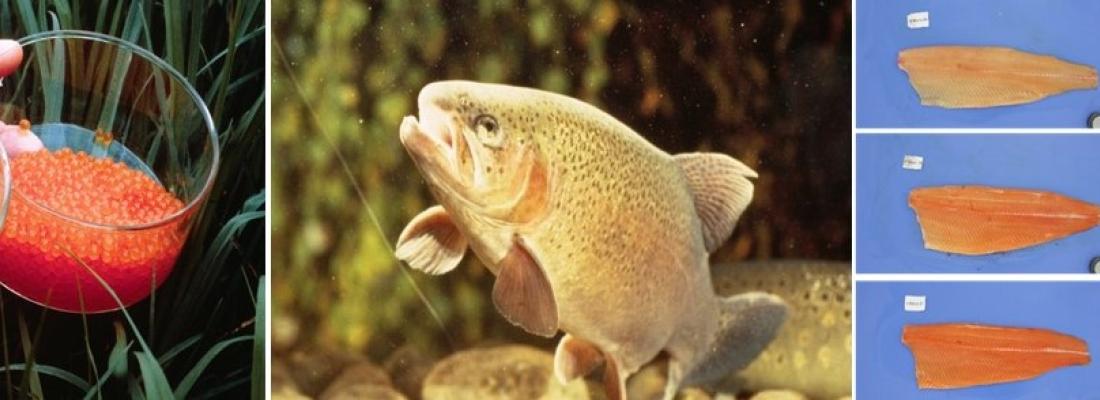Agroecology Reading time 5 min
How long does it take for flesh quality of rainbow trout to recover after spawning?
Published on 02 September 2021

In fish rearing industry, sexual maturation results in loss of profit or at least in a delay to valorize spawning fish. Indeed, many edible fish display poor fillet quality after sexual maturation and as such cannot be processed immediately after spawning. So, a post-spawning rearing period may allow the recovering of an acceptable fillet quality. So far, flesh quality restoration after spawning has received little attention.
In the present study, the evolution of technological and organoleptic qualities was investigated in diploid autumnal strain female rainbow trout (24 months of age) after spawning. Immediately after spawning, nine groups of trout (n = 25) from the same cohort were placed separately into circular tanks and fed ad libitum. Fish were then sampled at 0, 1, 2, 4, 8, 13, 16, 24, and 33 weeks after spawning (PS0, PS1, PS2, PS4, PS8, PS13, PS16, PS24, and PS33). Immature (no egg produced) female trout from the same cohort were also sampled as controls at the beginning (C0) and at the end (C33) of the experiment. Immediately after spawning, PS0 trout showed a significantly lower raw fillet yield than control (C0). Furthermore, raw fillet from these trout was less colored (lower redness a*) and presented higher lightness L* value than raw fillet from C0 trout while their fillet mechanical resistance was similar. Raw fillet yield increased after the 16th week post-spawning. The fillet lightness steadily decreased from the 4th week to the 24th week post-spawning and did not change afterwards, whereas fillet redness increased from the 8th week to the 24th week after spawning. Fillet mechanical resistance declined progressively after spawning with a significant change from the 13th week. Concerning the smoked fillet, the smoking yield of PS0 trout was significantly lower than that of C0 trout. Thereafter the smoking yield of post-spawning trout slowly increased until reaching a significantly higher value at the 24th week. The evolution of smoked fillet color and mechanical resistance after spawning was similar to that of raw fillet.
At the end of the experiment, most quality parameters of PS33 trout fillet were similar to those of C33 trout. We discuss the post-spawning quality parameters recovery in three sequential phases. On the whole, our study reports that the technological and organoleptic properties of the flesh were recovered in female trout 24 weeks after spawning (≈1400 ◦C.day).
Ahongo, Y.D.; Kerneis, T.; Goardon, L.; Labbe, L.; Bugeon, J.; Rescan, P.Y.; Lefevre, F., 2021. Flesh quality recovery in female rainbow trout (Oncorhynchus mykiss) after spawning. Aquaculture, 536: 12. http://dx.doi.org/10.1016/j.aquaculture.2020.736290
